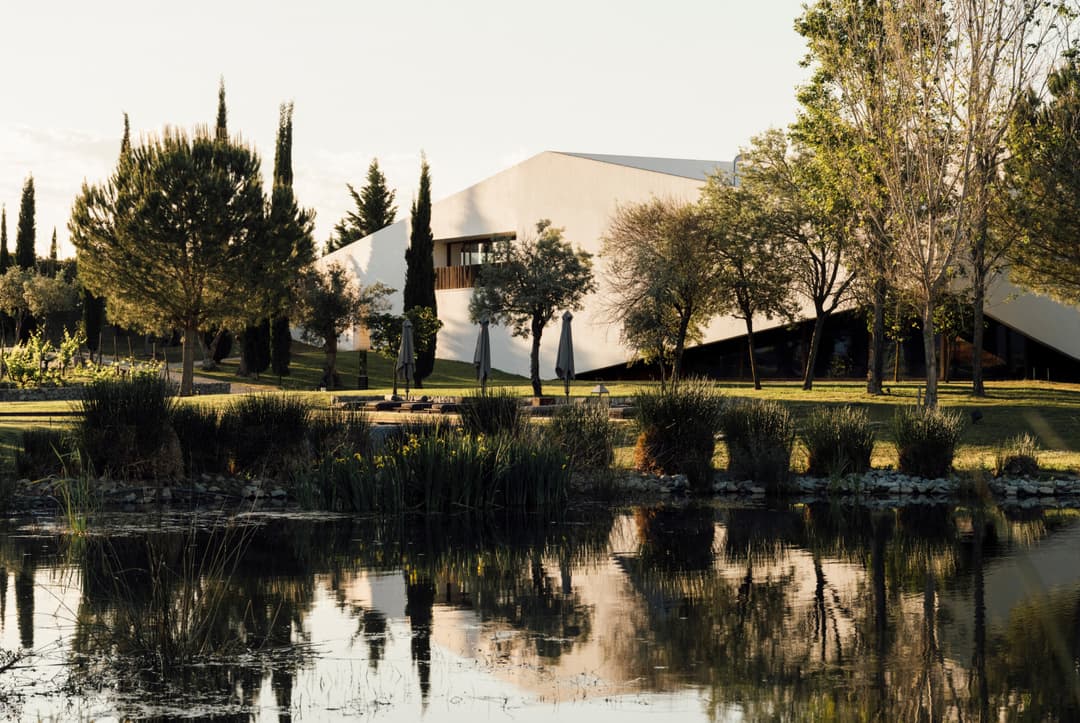
Play Movie
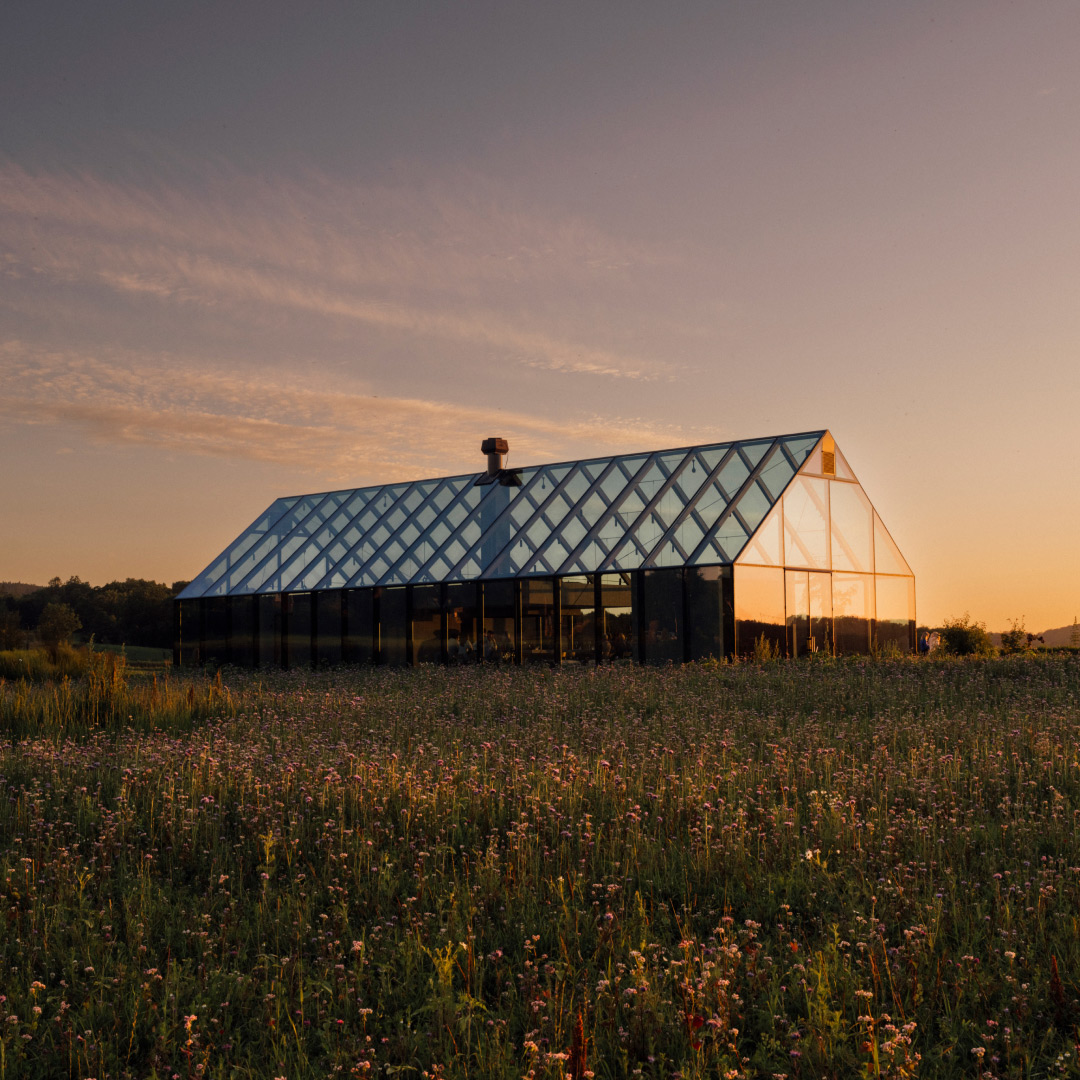
Listen
to Katherine Kennard
reading this story
The Philosophy of Flavour
Restaurant ÄNG
A couple of little black and white birds cross the road ahead of us; in their swift flight, they look like white wagtails, which are common in open countryside. The leafy vegetation of Halland County on the western coast of Sweden escorts us into Ästad Vingård. It’s one of the few vineyards in the country, where winemaking is a small but developing industry.
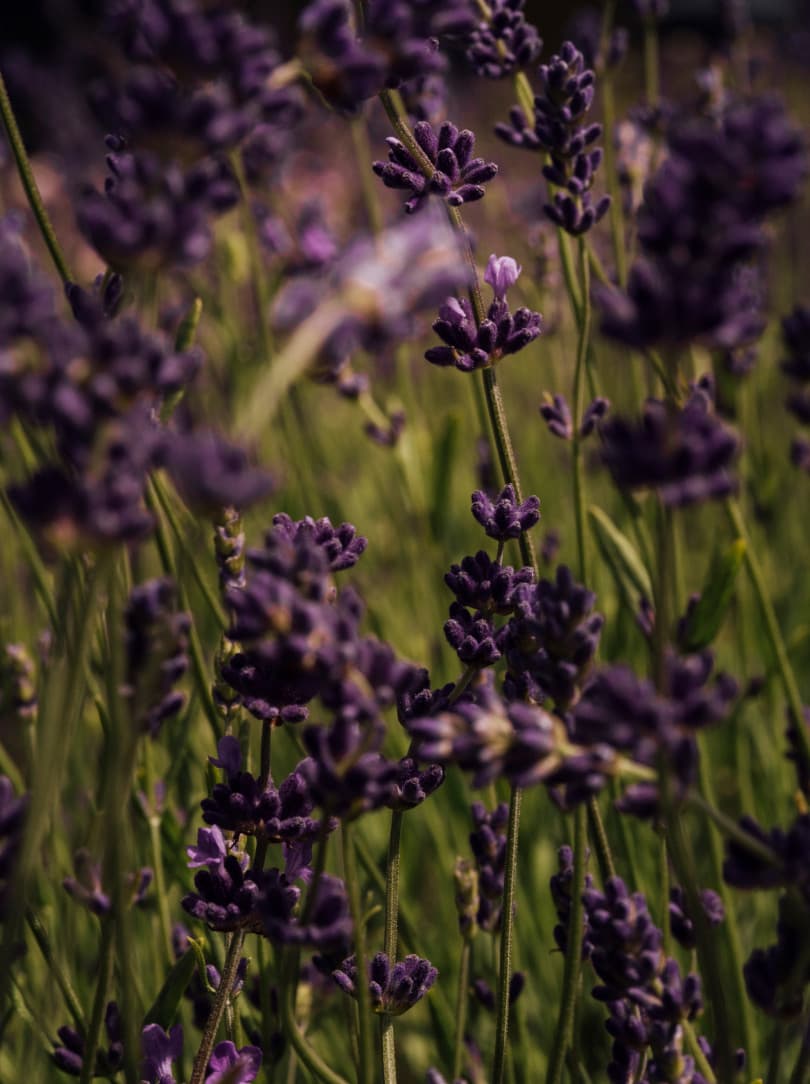
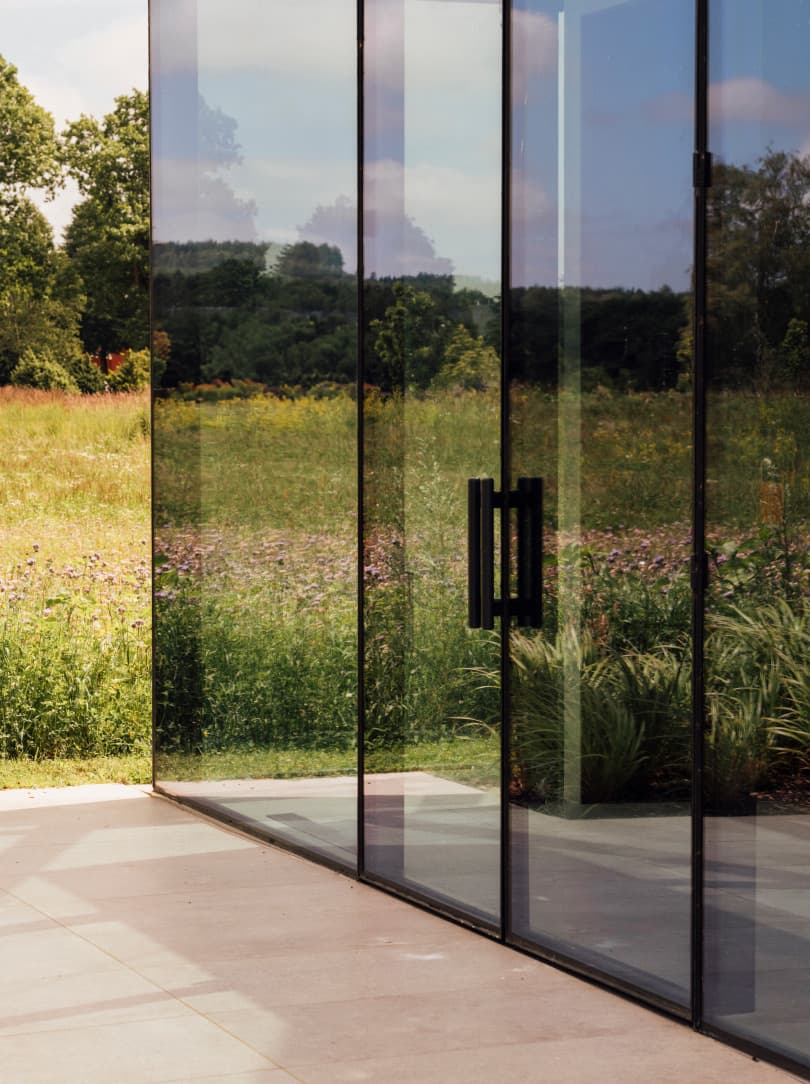

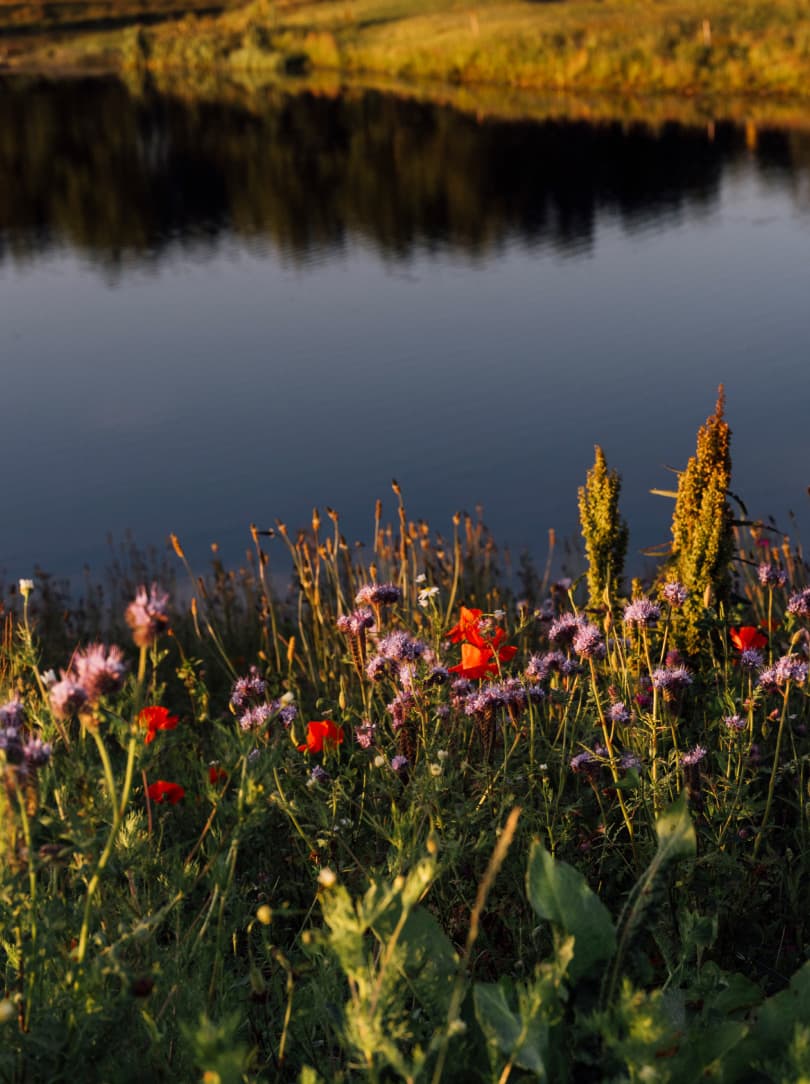
We are entering a historic place: a centuries-old farm that has belonged to the same family for the last three generations. It is surrounded by generous forest and a placid lake.
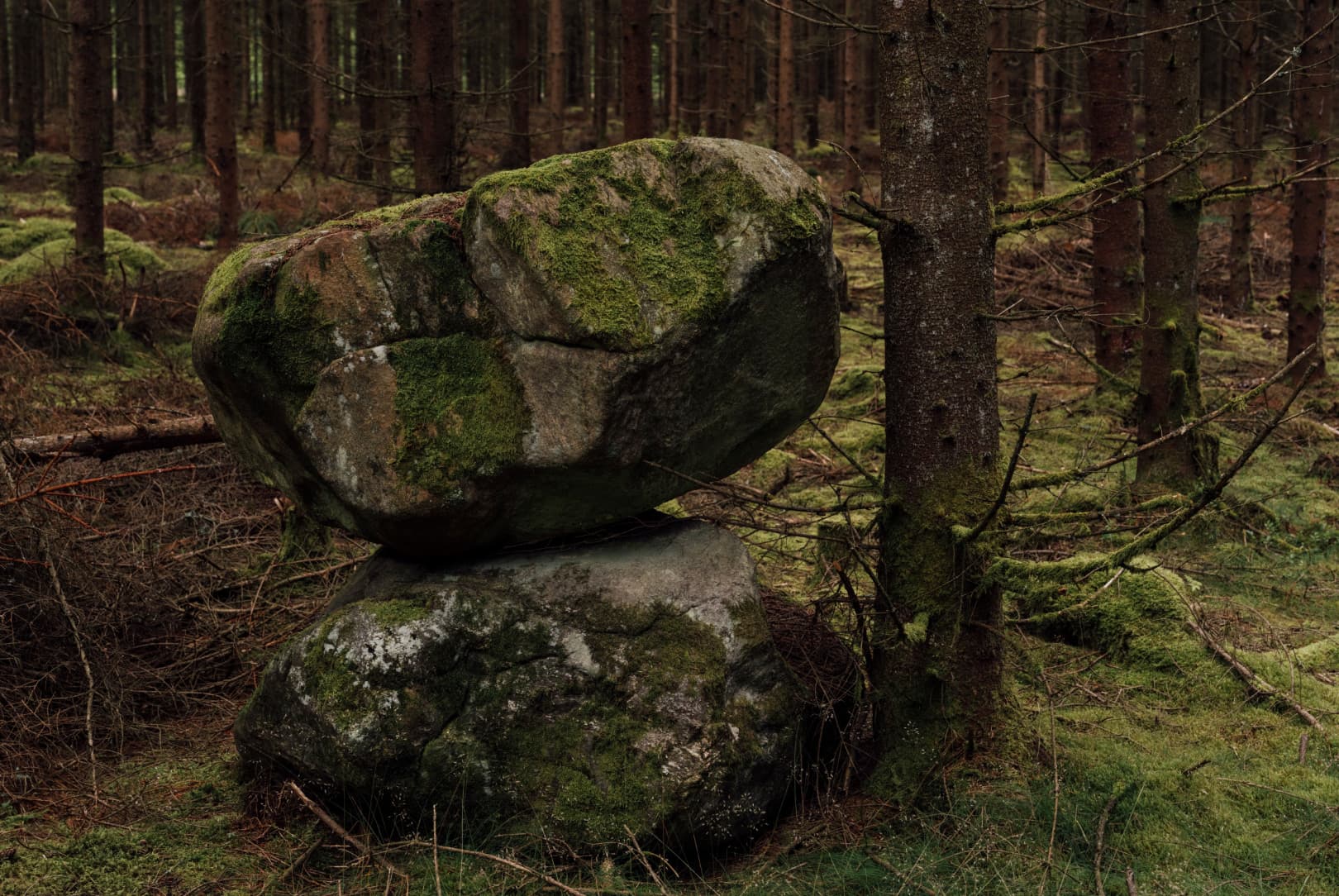

And there, above a meadow, in the best spot of the property, overlooking the greenery and the water, a glass house mirrors its surroundings. It has a minimalistic yet striking appearance, gently allowing the light and landscape to pass through its crystal surface. This building is home to the Michelin-starred restaurant ÄNG.

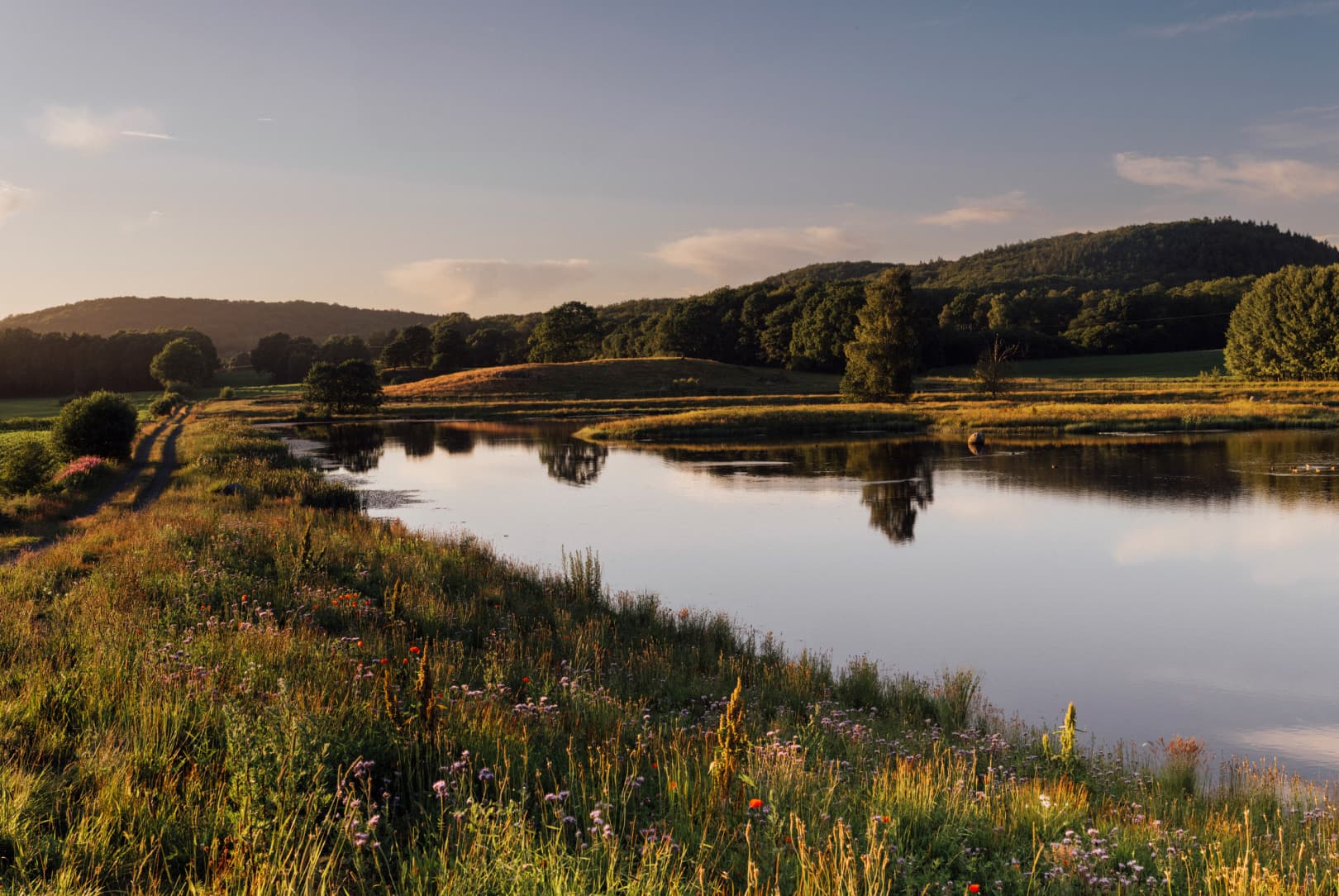
In 2018, when chef Filip Gemzell and sommelier Ann-Catrine Johansson arrived at Ästad Vingård, ÄNG didn’t yet exist. The couple were invited to consider running what would become the new fine-dining experience in a hospitality project that already included a spa and guest rooms.


“My first impression was breathtaking. The landscape really captivated me, and it was a very simple decision to stay.”
FILIP GEMZELL, CHEF
“My first impression was breathtaking. You are driving through all these forests, and you see some farms on the way, but then you realise that you are in the middle of nowhere,” remembers Filip Gemzell. “The landscape really captivated me, and it was a very simple decision to stay.” ÄNG opened its doors in 2019, originally housed in what is now the reception building.




We follow Filip on this bright morning as he leads the way into the woods. A tractor from a neighbouring farm rumbles past, cutting hay for the animals, leaving behind a pleasantly earthy and humid smell. Filip bends down in the middle of a particularly bushy area, looking for stinging nettles. He plucks them with his bare hands, smiling timidly as he assures us that he’s used to it. ÄNG’s kitchen makes prolific use of this herb, boiling it to deaden the sting. Filip then gathers some spruce branches, which are also used in ÄNG’s dishes; lately, they’ve even been made into ice cream.
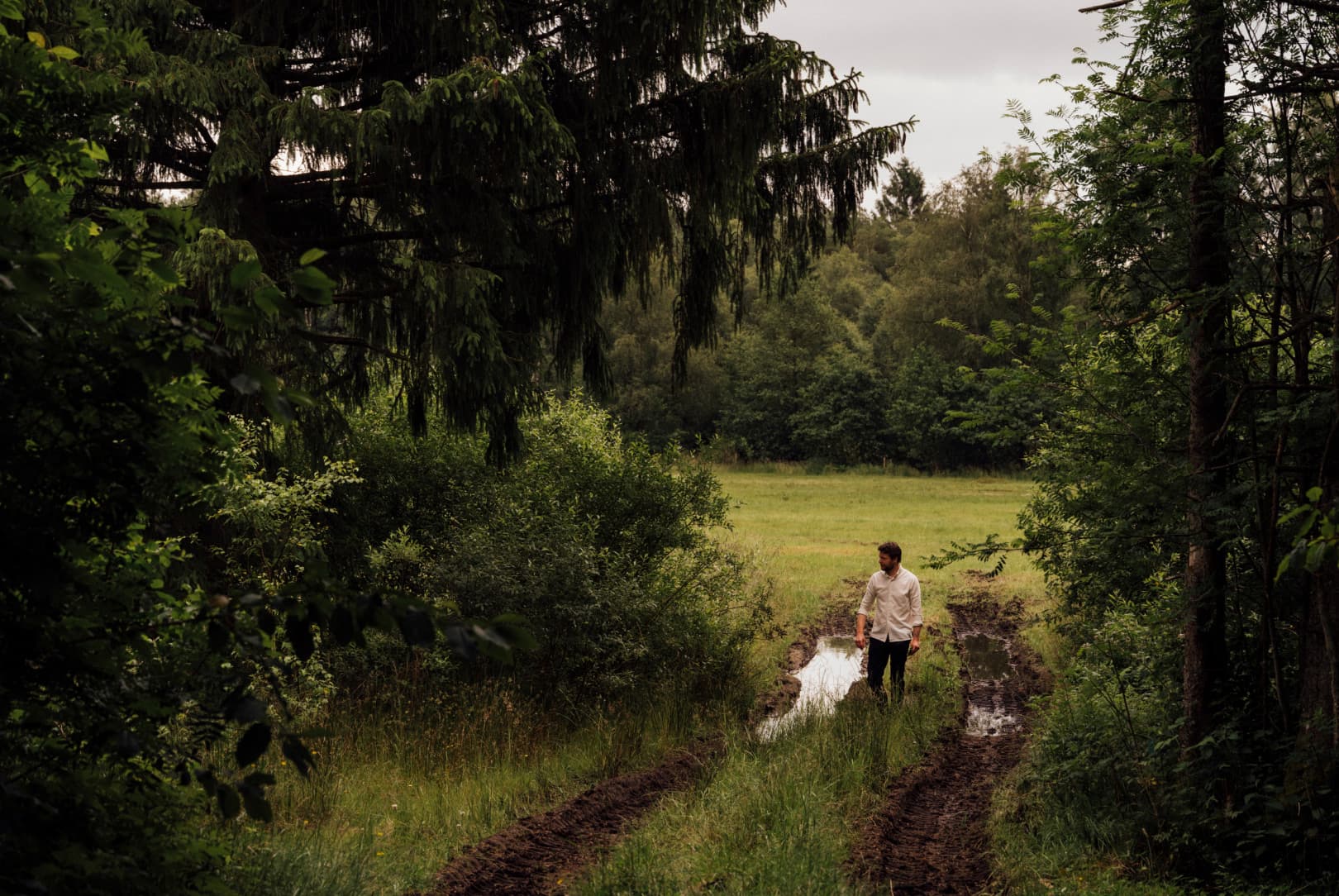
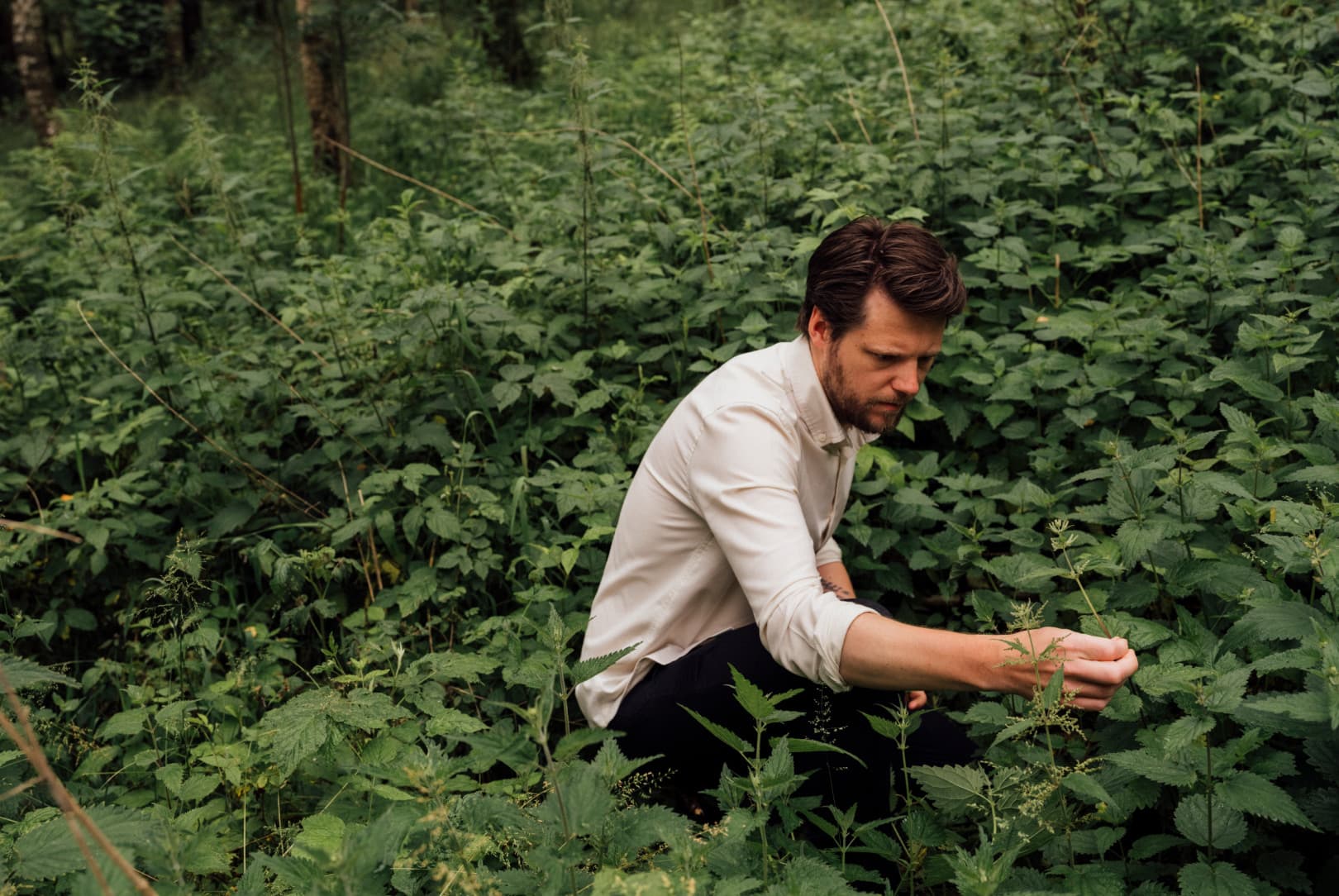
“Before I came to Ästad, I was working on an island north of Norway, called Svalbard,” recalls the chef. “It’s also where I met Ann-Catrine, who I’m running ÄNG with today. It’s a remote island where we initially started the concept of what we are doing today, but on a smaller scale. We started to look at using as much local produce as possible, which was challenging on an island like Svalbard. Not much grows there because the ground is frozen year-round. However, we found some mushrooms and a variety of sorrel, and we worked directly with hunters and fishermen for meat.”
“Working directly with the people who provide the produce instilled a sense of fulfilment in me.”
FILIP GEMZELL
Until that period, Filip had mostly worked in cities like London and Stockholm. “But living on an island and working directly with the people who provide the produce instilled a sense of fulfilment in me,” he reflects. “It gave me a lot more respect for the produce and created a feeling that I absolutely loved. So, when I left the island to come to Ästad Vingård, it was already set in my mind that there’s no other way of cooking than that.” For the chef, this means forging a straightforward and honest relationship with both produce and producers: an approach that respects the art of simplicity.

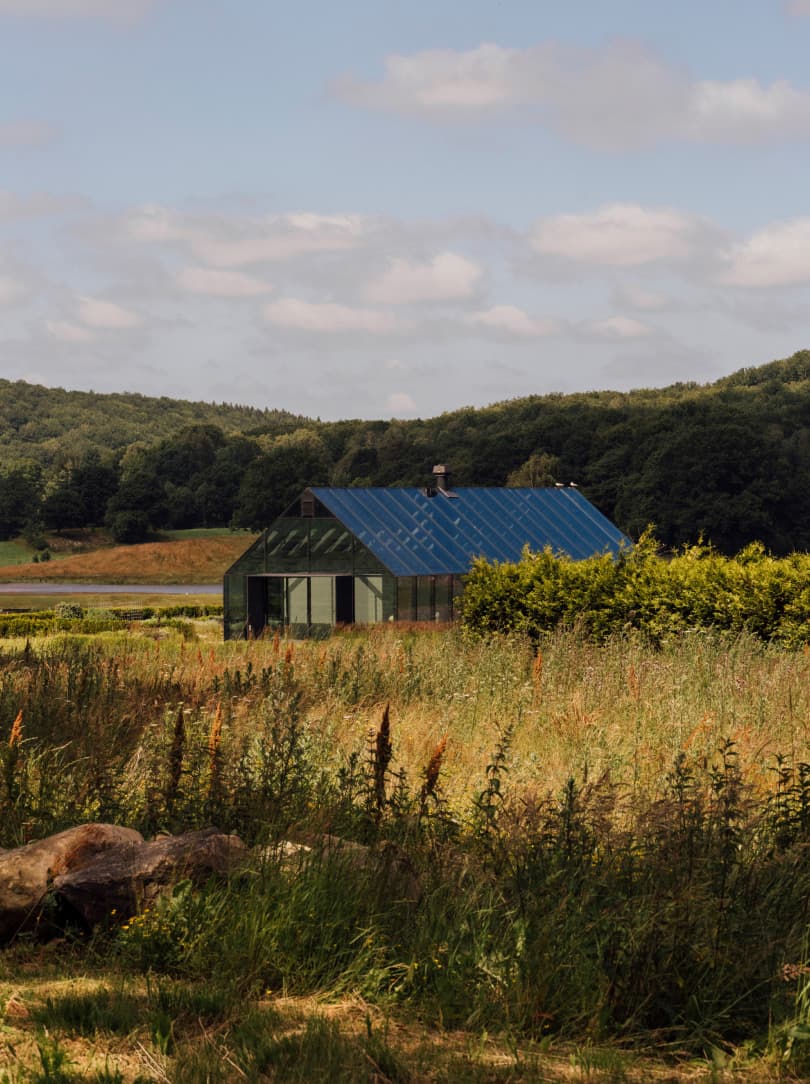
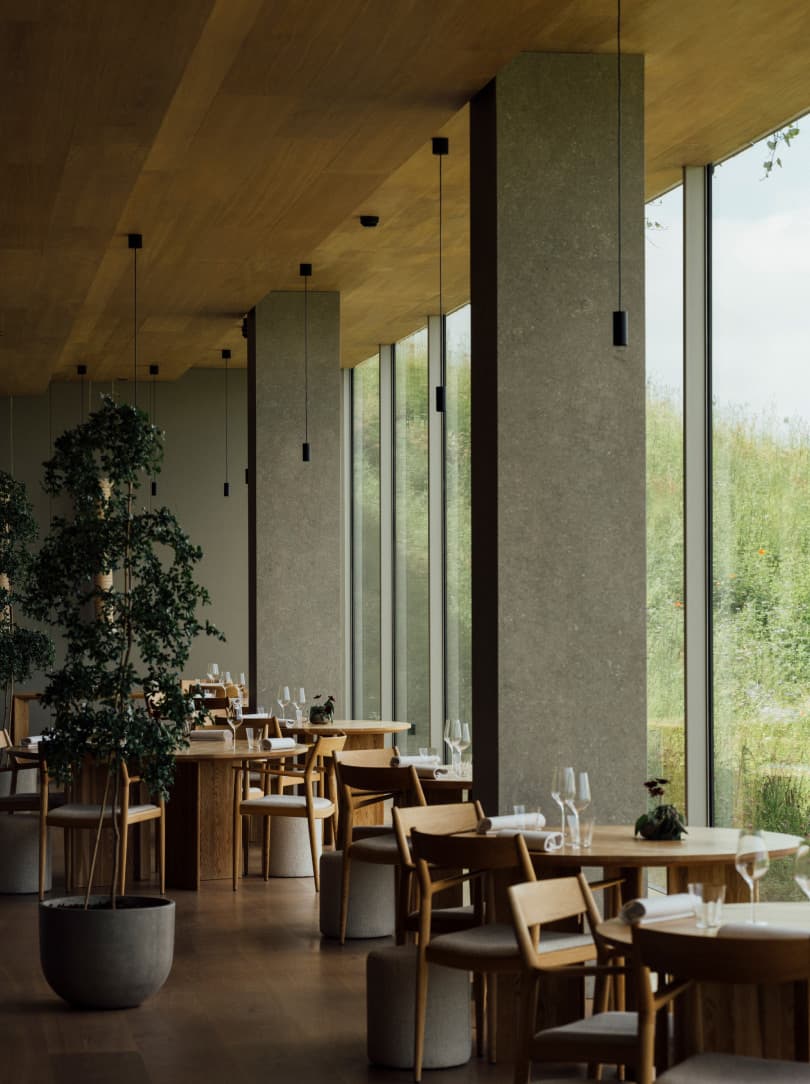
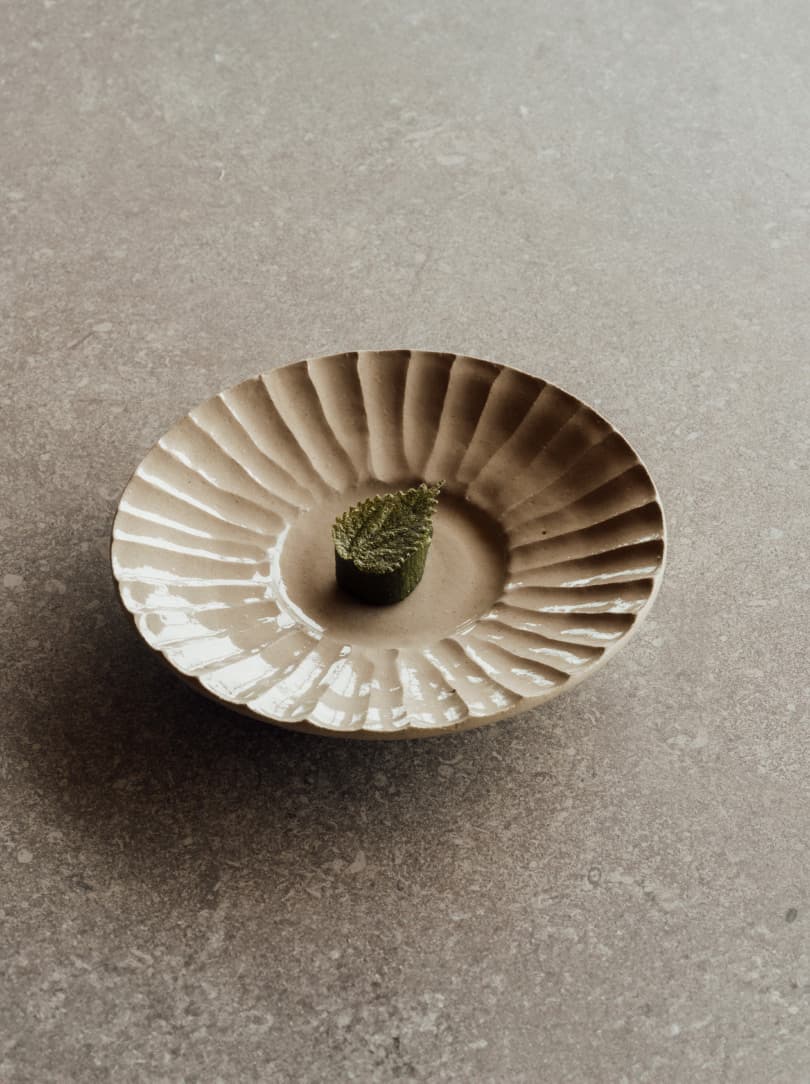
Dressed in a plain cream shirt with the sleeves folded up, Filip takes off his cooking apron to move freely around the woods. His gentle facial expression and careful gestures match the calmness of our surroundings. The chef takes a few seconds to think before answering, his gaze and words unwavering in the genuineness that his work strives to showcase. The nature around him appears to back him up.
In Halland, Filip started off by knocking on farmers’ doors, “trying to see what this area of Sweden could give us.” He was looking for high-quality, organic produce, and it took quite some time before he had all the ingredients to create the first menu for ÄNG. “By doing that, we got to know a lot about this community and the farmers. One thing led to another, and to another.”
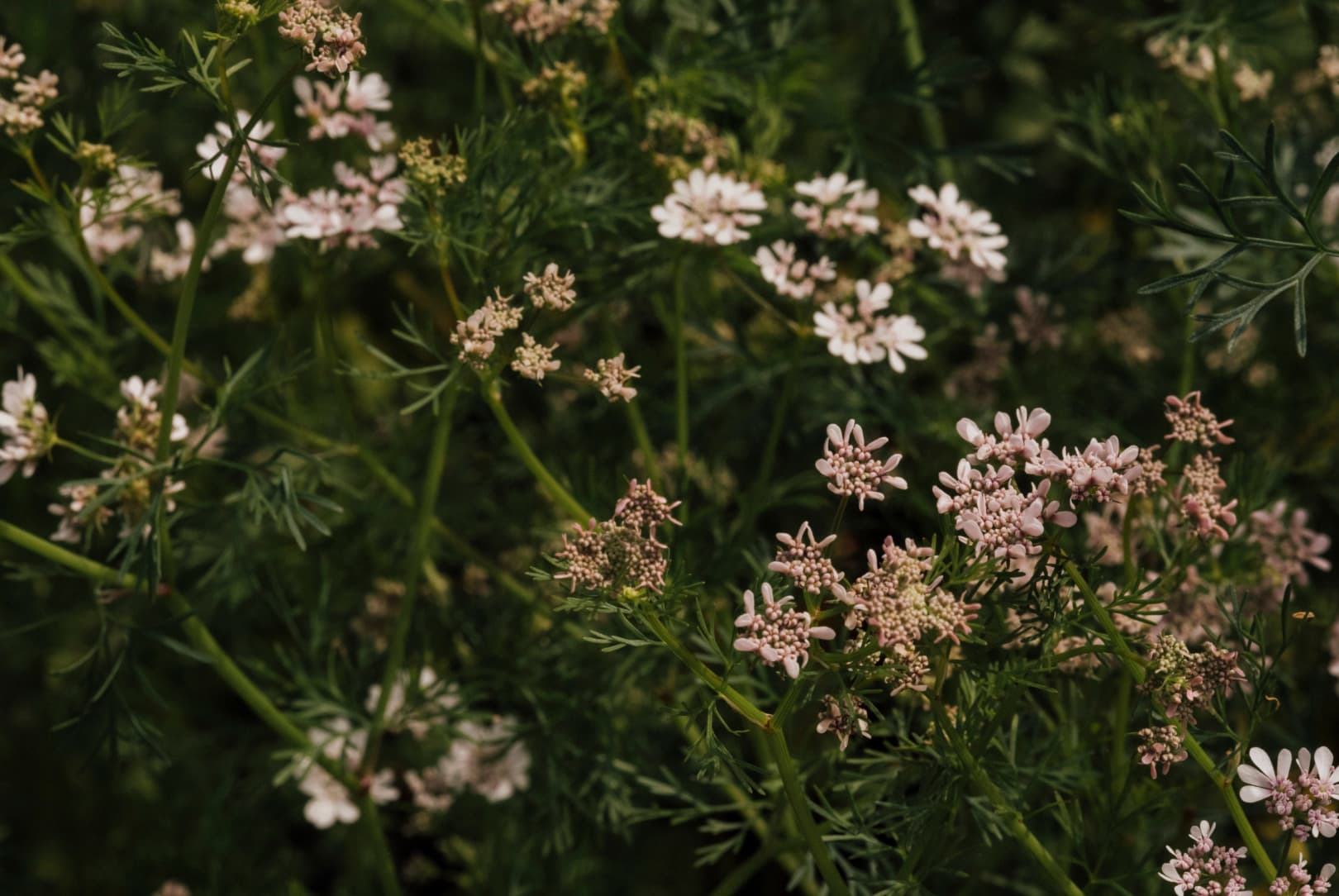

Today, the restaurant has about fifty different suppliers. Filip works with one producer just for a specific berry, or one person just for picking mushrooms; all the pork comes from the same farmer, as do all the langoustines, and so on, with every form of protein. “We don’t have many suppliers that supply a lot: we have a lot of specific people who work with specific products,” explains Filip. That’s how he prefers it: being able to trace back the sustainability and quality of the produce, promote responsible and caring farming, and develop meaningful relationships with the community.
“It’s full of farmers and full of beautiful land,” says Filip, gazing around on the way back from our forest incursion. “It gave me peace of mind. I’ve lived in big cities for a long time and coming to Halland changed me a lot, not just as a chef. I find more peace in what I do now than I did before. And I think a big part of that is the location we are in.”

“Having a Michelin-starred restaurant was one of Ästad Vingård’s goals. When we met Filip and Ann-Catrine, it was very clear that their passion was aligned with ours. It was a perfect match for us.”
DANIEL CARLSSON, CEO & PARTNER
Daniel Carlsson, CEO & Partner of both Ästad Vingård and ÄNG, does not know exactly how long this location has been agricultural land, but he knows that it goes back centuries. Despite his schedule taking him in and out of Halland constantly, he makes time to tell us more about the history of the property. His grandparents bought it in 1946 and expanded it by buying small plots of land. They bred hens and sheep, ran a dairy and cultivated various crops. While traditional in many ways, their farming approach was also experimental, as they explored different activities. Daniel’s father Rolf, one of nine siblings, bought the property from his parents in 1985, and introduced organic milk production – a pioneering move in Sweden’s emerging organic farming practice. Rolf and his wife also started a small-scale tourist business with a restaurant and rooms for overnight stays. Daniel laughs, thinking how strange his family must have looked to the farmers around them, but he respects the vision and determination of his predecessors to “do their own thing”.
That’s why in 2010, when Daniel Carlsson and his siblings Linda and Mattias took over, they were not afraid to change direction. “We envisioned a future that involved developing new products and increasing their quality,” explains Daniel. Over three generations, Ästad has seen many endeavours, but it has always been fertile soil for visionaries, “consistent in their efforts to transform new ideas into reality,” as Daniel puts it.

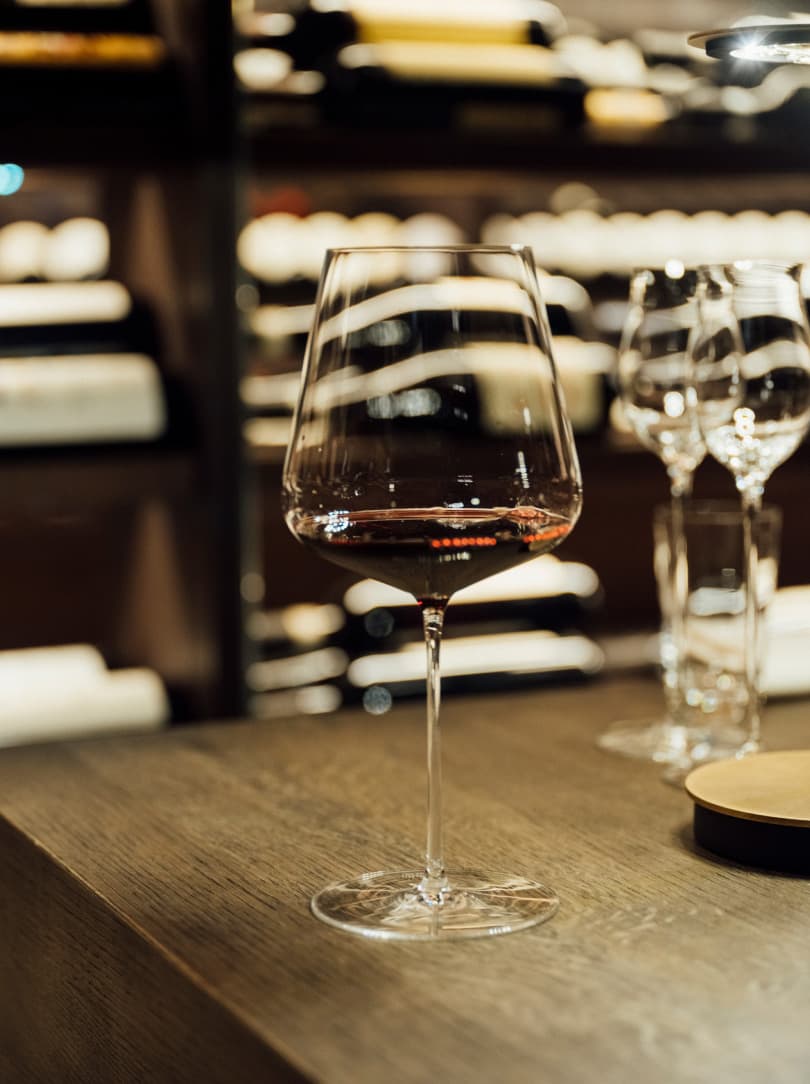

In 2011, Ästad Vingård became one of the very few wine producers in Sweden, cultivating four acres of the aromatic Solaris variety. Today, Ästad has added two more locations for its crops: one along the coastline of Halland, 15 minutes away from Ästad, and the other outside Malmö in the south. “Sweden is not a wine country yet, but it will become one for sure,” states Daniel. “In the last couple of years, a lot of ambitious projects have appeared, and we are one of them.” Having a Michelin-starred restaurant was one of Ästad Vingård’s goals. “We knew we had to find someone with that kind of talent, and when we met Filip and Ann-Catrine, it was very clear that their passion aligned with ours. It was a perfect match for us,” recalls Daniel.
As the day progresses and the sun climbs higher, it brings forth the lushness and clear views of the meadow around us. Indeed, ÄNG means ‘meadow’ in Swedish. The restaurant’s name simply describes its setting in the middle of a meadow. Yet, as it usually happens with projects of depth, it has found new meanings over time. For Filip, it also represents the simplicity of nature, which inspires ÄNG’s culinary concept. And it symbolises the fact that the surroundings are so essential in every aspect of the restaurant. “Our ingredients are mostly from this area,” says the chef. “They come from the forest around us, and we use anything we can harvest around the restaurant and in the meadows.”


“I’d explain ÄNG more as a journey than as a dinner.”
FILIP GEMZELL
When ÄNG started in 2019, the concept was clear: “to use local produce, do the best we could with it, and provide fantastic service and food,” recalls Filip. Early on, it became clear that they wanted to do more with the environment around them; they wanted to create an enduring experience. In 2021, the restaurant received its first Michelin star; in 2022, after a few months closed, the next stage was unveiled, with ÄNG settling in its new building – the glass house designed by Norm Architects from Copenhagen and furnished by Keiji Ashizawa for Karimoku Case from Japan – and presenting a renewed menu. In addition, Filip and Ann-Catrine became partners of the restaurant.
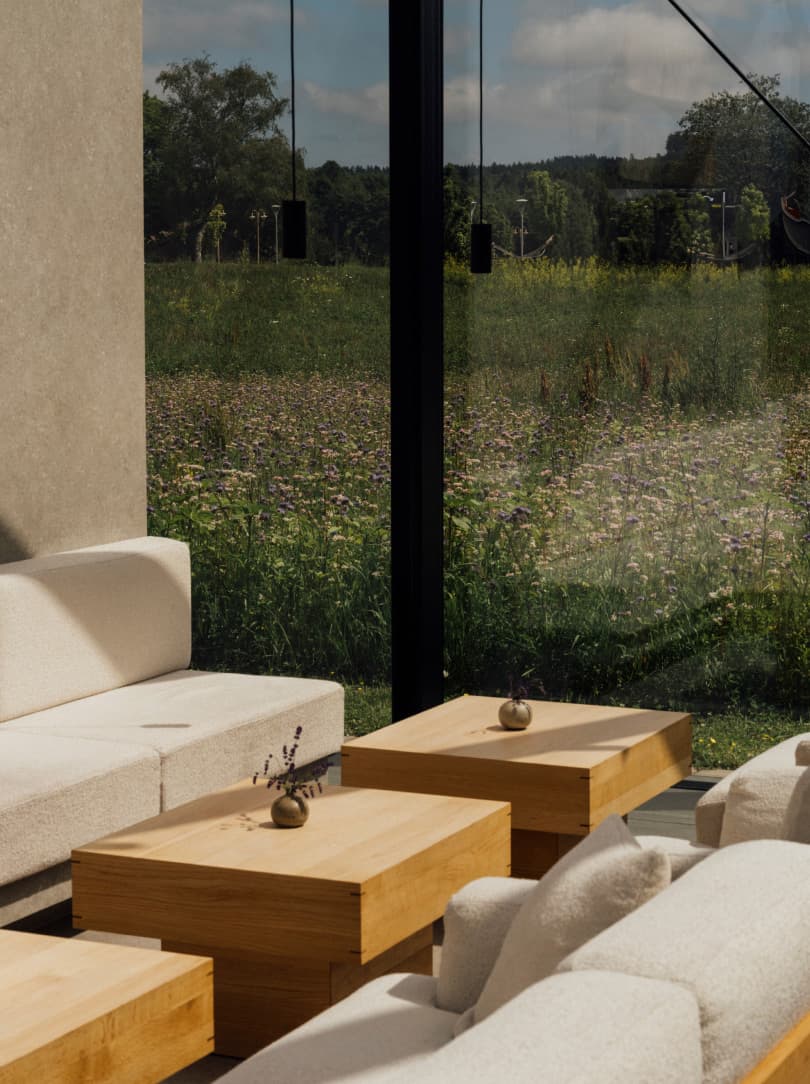
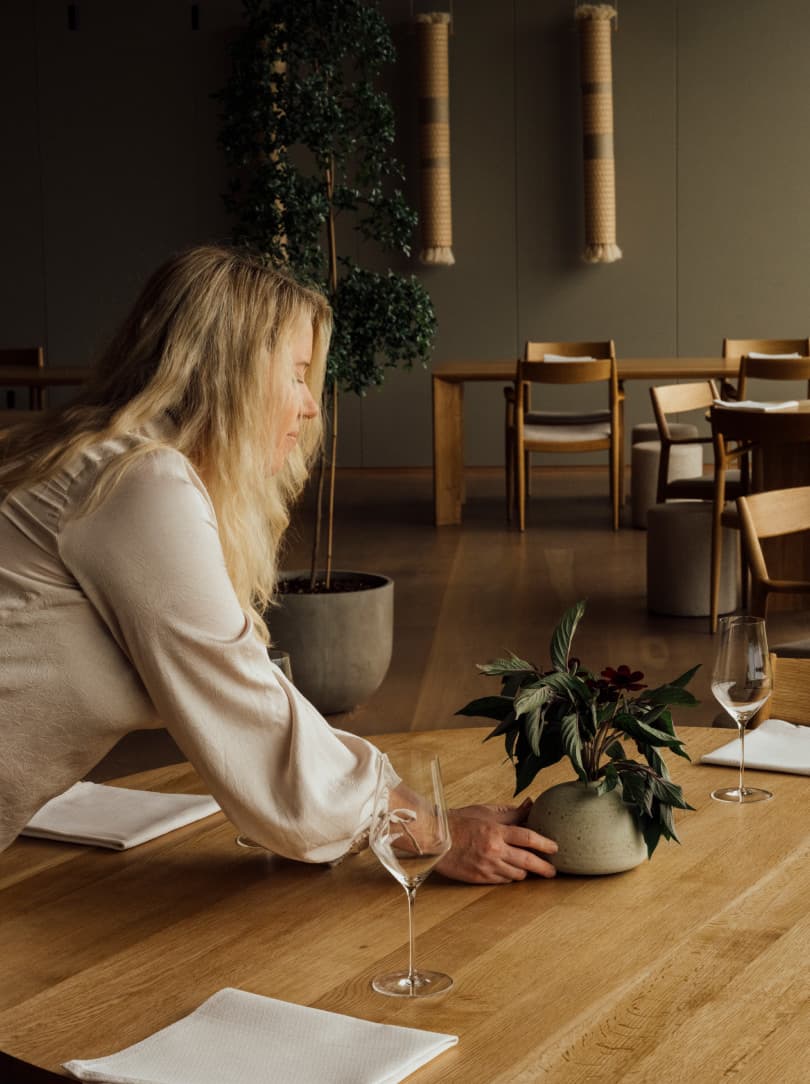
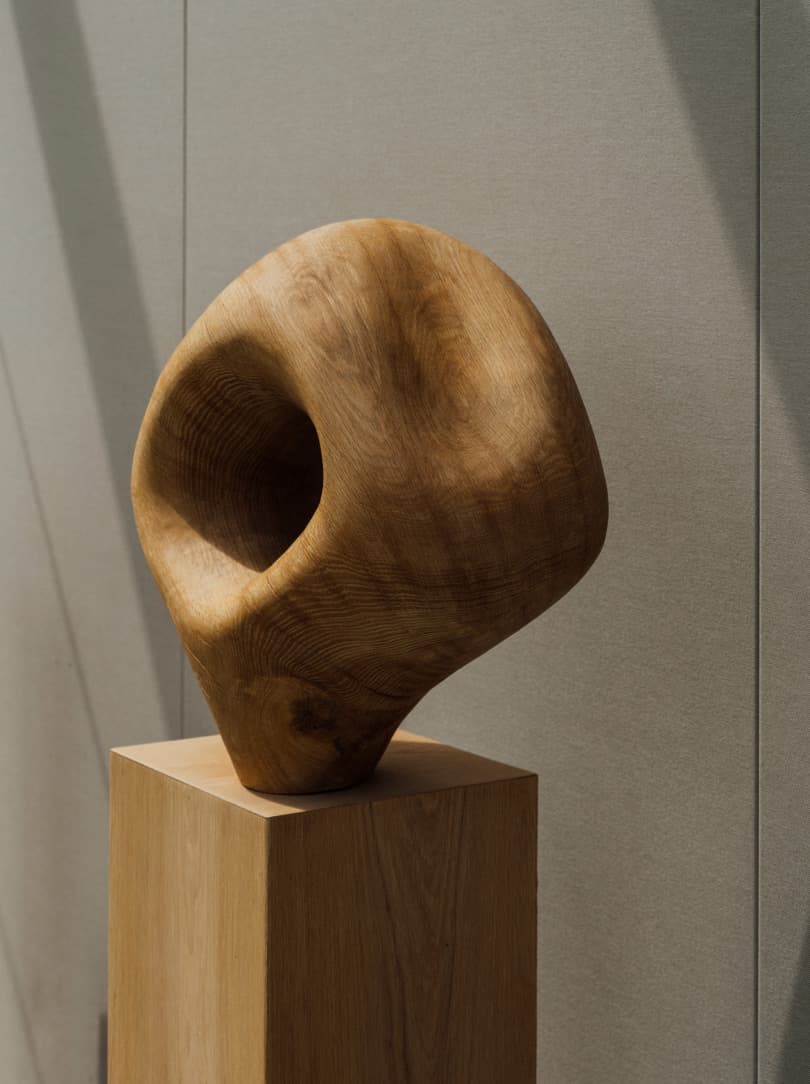



“I’d explain ÄNG more as a journey than as a dinner,” reveals its chef and now co-owner. The menu is built on seventeen to nineteen courses, depending on the day. The concept is for guests to move through different areas of the restaurant to experience varied impressions, emotions and types of food.
We begin this journey inside the transparency of the glass house. The atmosphere is vibrant and rhythmic, filled with conversation and anticipation from the guests, and with the swift movements of several chefs preparing snacks and canapés, like the nettle and green chilli bite, made from the herbs picked in the morning. After a glass of champagne, we take the elevator down to an underground level that leads to an unexpected wine cellar. Here, the setting is darker, almost mysterious, and the courses more substantial, including a chestnut tart with pickled chanterelles, portobello cream and Swedish Gotland truffles, and langoustine with caramelised cream, juniper, dill oil and yarrow.
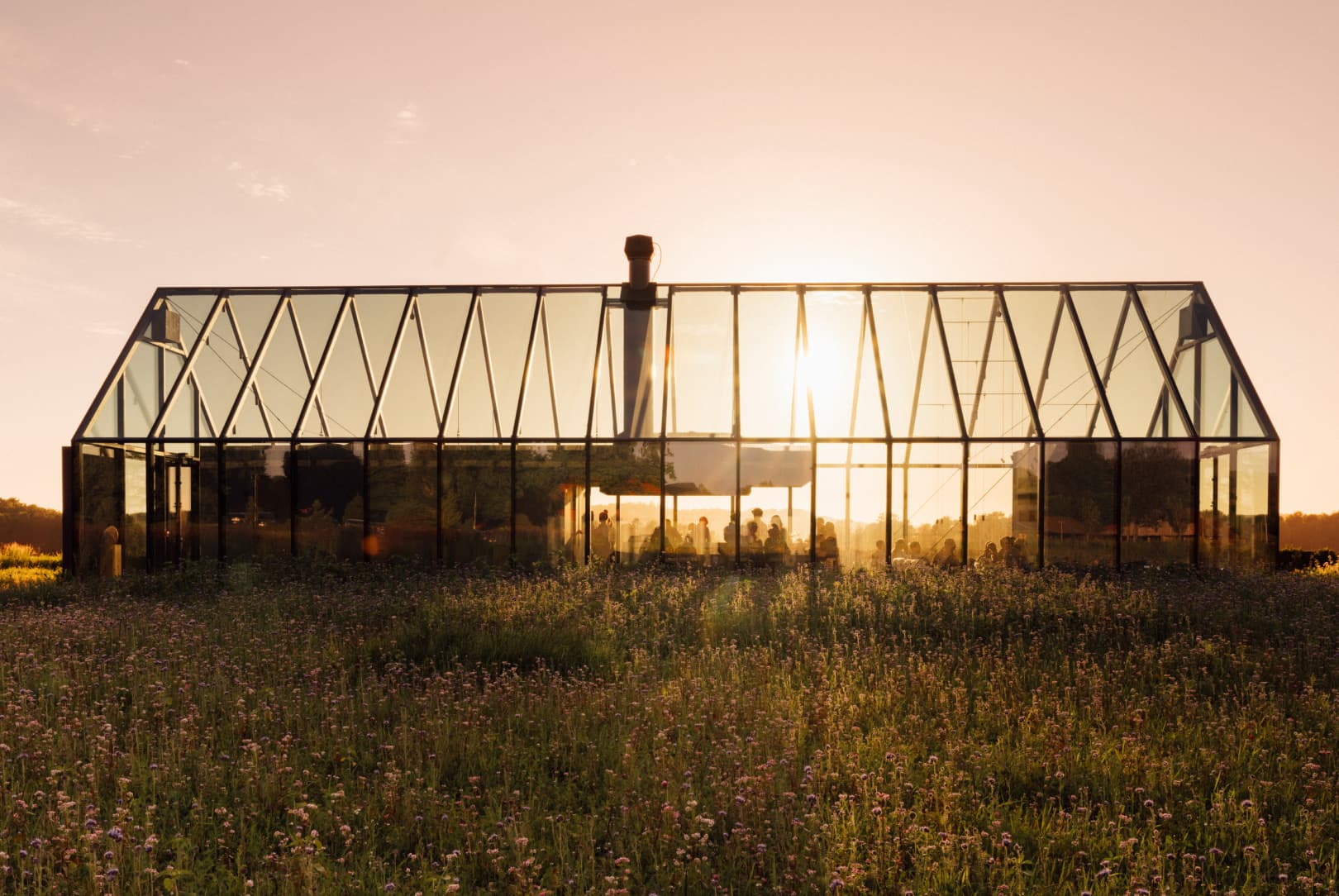
The multisensory journey then takes us to the main dining room: a bright, open space with a grand window facing the lake, reminding us that we are inextricably linked to this particular piece of nature. The open kitchen and the bar reveal the pace and movement of the gastronomic choreography, while the calmer music lets us focus on the flavours of dishes like scallops dressed with fermented tomato sauce, or fish with white asparagus. These are strong, acid flavours that don’t hide their sources. The ingredients are the protagonists.
As we move to the next stage, the wine cellar lounge, the lights dim and classical music sets a calm tone for the cheese service. Upon returning to the surface via the elevator, we emerge into the light, ready for dessert, with a new perspective. Every journey leaves its mark on us.
“The whole idea with ÄNG is to create more than just a dinner,” asserts Filip, seated under the half-light of the wine cellar. “We want our guests to leave feeling that they’ve experienced something unique. Something they can carry with them for a long time.”
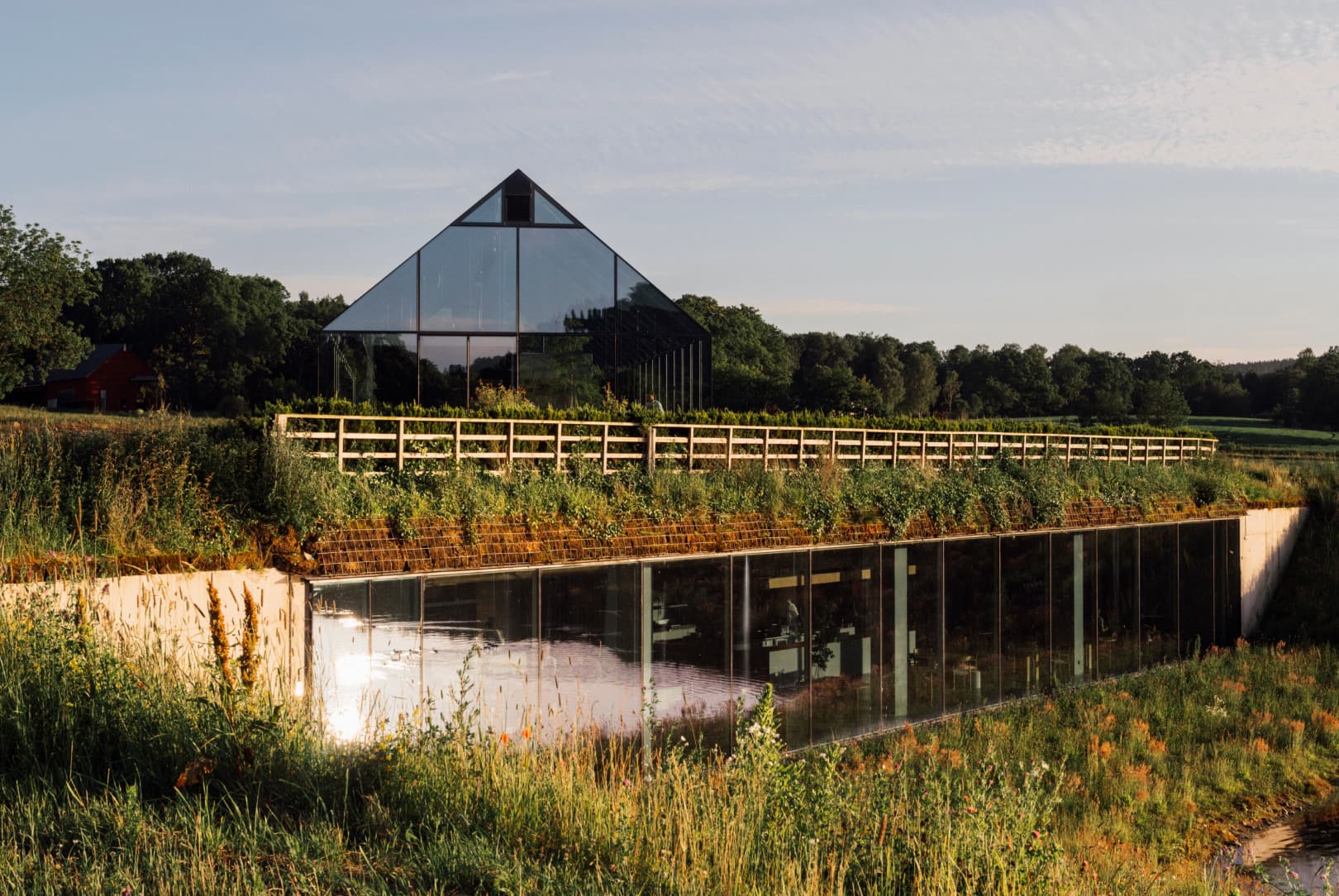
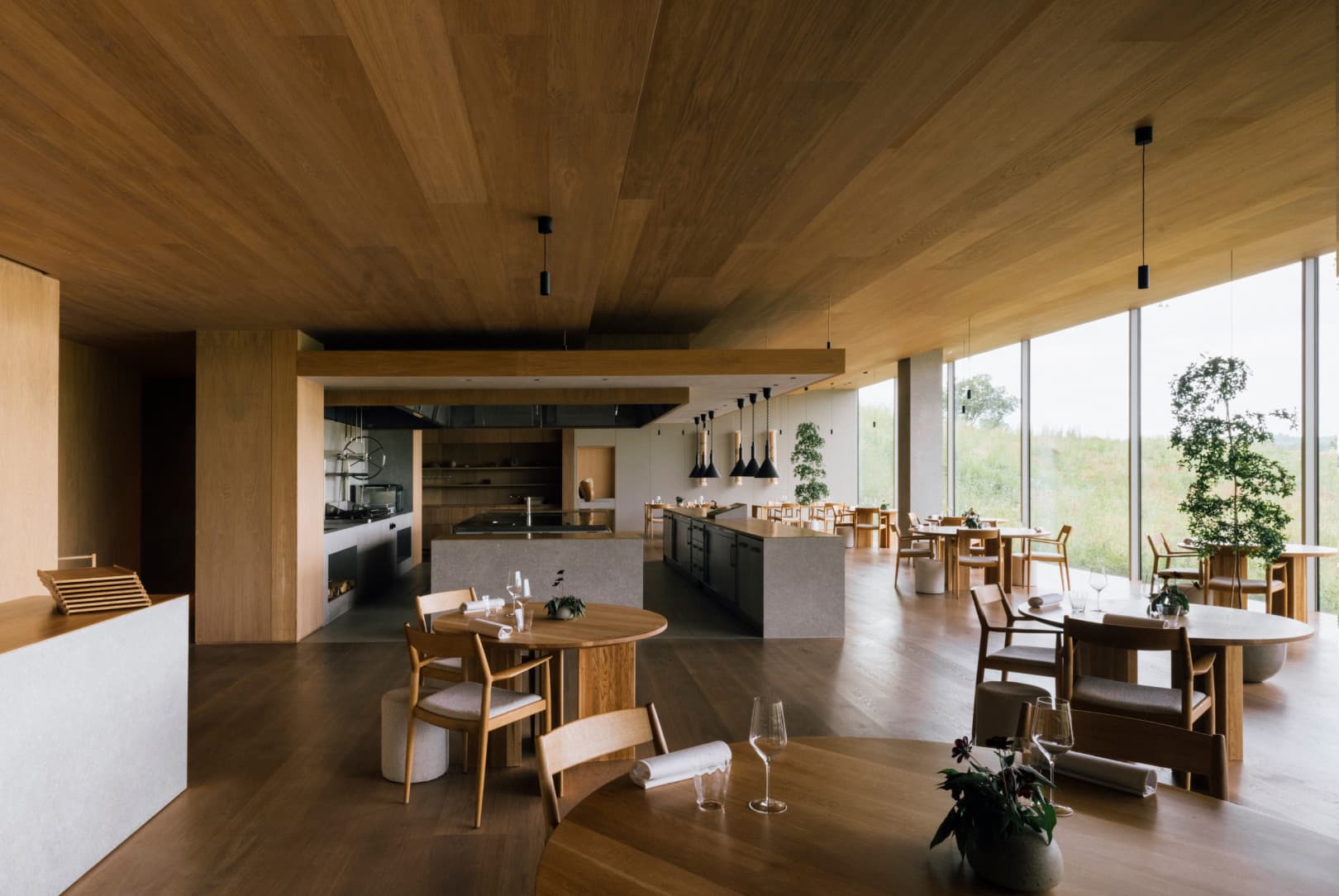
The relativity of time takes on greater significance outdoors, in nature. Here everything moves at its own pace: not slower, not faster, just the way it needs to be. In summer, the sunset illuminates the sky until around ten o’clock at night. Daniel loves the languid, golden hues of autumn; Filip, on the other hand, finds this area of Halland particularly beautiful in winter, when it’s all white and snowy. “But what I really enjoy is that the seasons are quite short and they’re constantly changing,” adds the chef. “I find myself changing along with them. It really is about peace and nature here.”
“We emphasise simplicity: we avoid too many ingredients in one dish, and instead focus on adding depth to each.”
FILIP GEMZELL
Since the reopening, ÄNG has spent significant time developing the dishes it serves. Some items on the menu have taken up to a year to develop, experimenting with different fermentations and sauces. The team might cook a certain meat more than thirty times before it’s added to the menu. The key to ÄNG’s kitchen – and philosophy – is to use few ingredients and highlight the flavours as much as possible. This results in dishes that appear simple but have a complex process behind them.
“Our style of cooking is about giving the produce the space to shine. We emphasise simplicity: we avoid too many ingredients in one dish, and instead focus on adding depth to each,” says Filip.
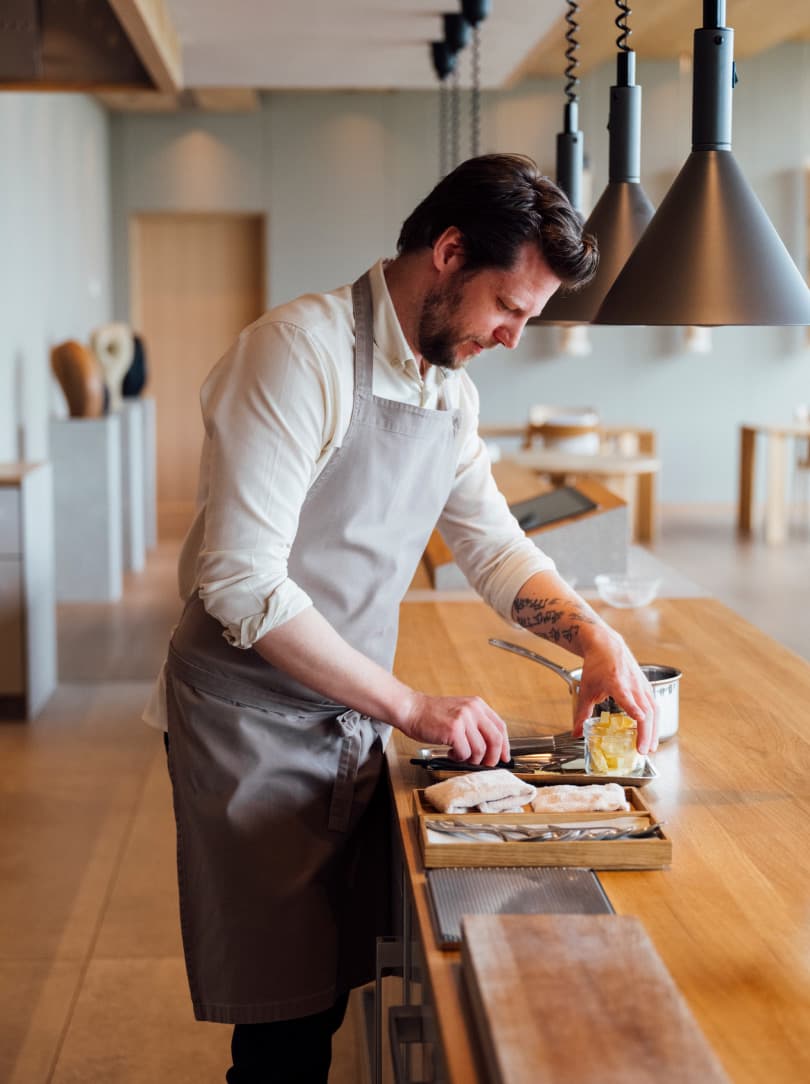
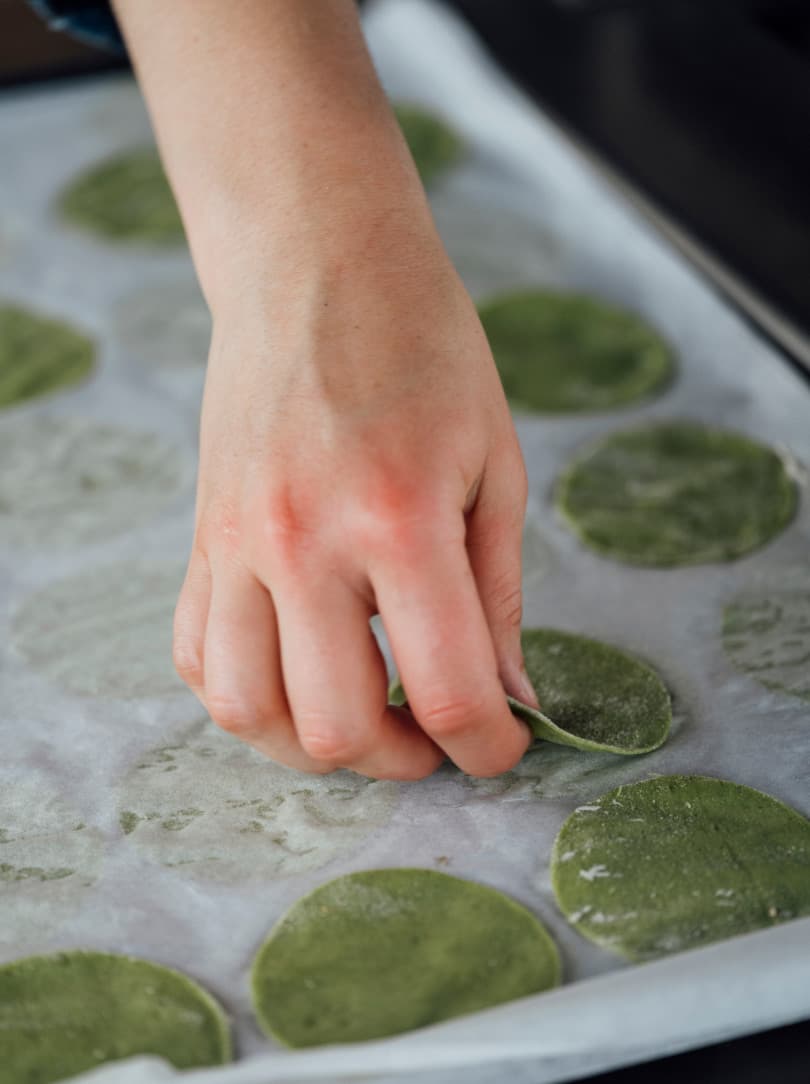
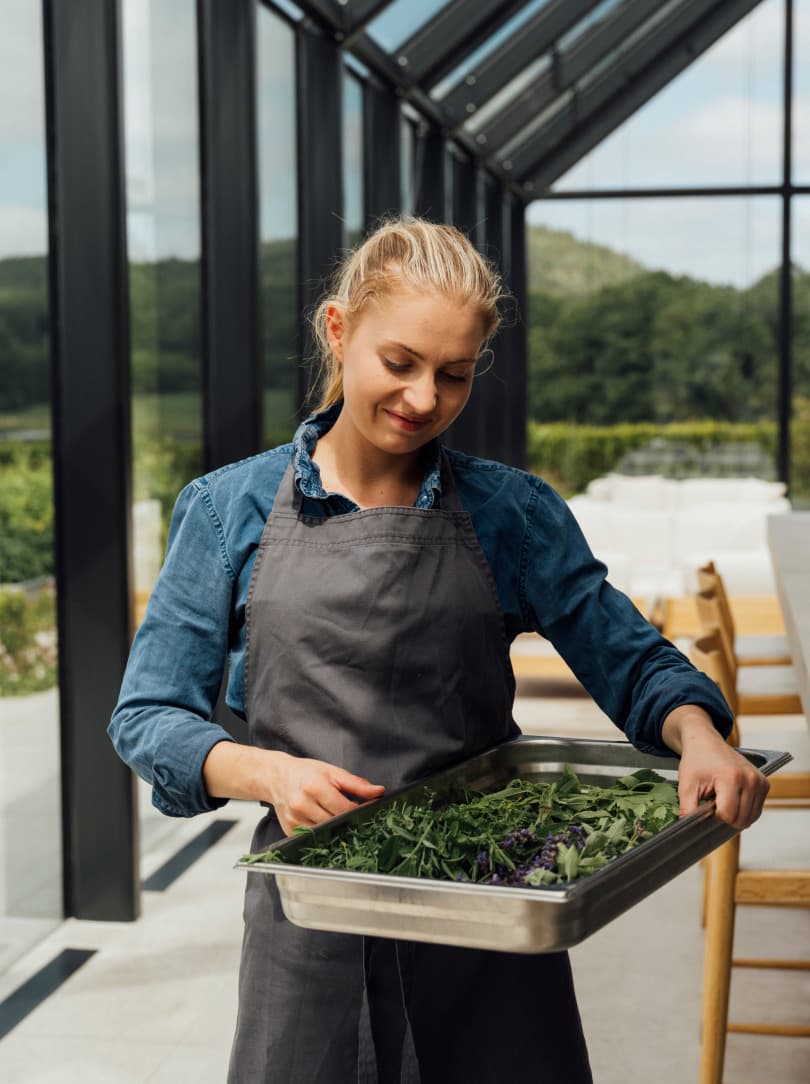

One good example is a dish with blue mussels – one of the chef’s favourite shellfish, abundant on the west coast – which took about a year and a half to perfect. The starting point was developing an emulsion so intense that only a few drops were needed. Filip was adamant that this dish had to be “the most ‘umami’ we’ve ever had at ÄNG”. The emulsion is made using steamed blue mussels, enhanced by a local oil which is steamed together with both the mussels and seaweed for almost 24 hours. The team seeks to intensify everything: the seaweed and the shellfish are dried and dehydrated, then transformed into powders added to the same emulsion. “We began with the idea of a very intense shellfish dish, and that’s exactly what we achieved. However, the layers in it are nothing like I first planned,” confesses the chef. “Whether it’s blue mussels or tomatoes, we try to prepare them in a few different ways. When it’s on the plate it looks very simple, but there are different fermentations, powders or other processes behind it, elevating the length and depth of the flavour to another level.”
“After spending a long time creating a dish, when it’s finalised and added to the menu, there’s a sense of achievement. Typically, those dishes become my personal favourites to eat.”
FILIP GEMZELL
When it comes to ingredients, ÄNG takes ample advantage of the vineyard. Claes Bartoldsson, winemaker of Ästad Vingård, works together with Filip and Ann-Catrine to create exclusive and specific wines tailored to the restaurant’s menu. Likewise, the restaurant uses the grapes in their cooking: in fact, the unripe fruit is one of their core ingredients for achieving acidity. Everything is utilised: even the leaves from the vineyard are transformed into deliciously fresh sorbets.
“After spending a long time creating a dish, when it’s finalised and added to the menu, there’s a sense of achievement,” contemplates Filip. “Not all dishes are like that, of course, but there are some that take longer than others. And when those are ready, it’s a great feeling. Typically, those dishes become my personal favourites to eat. There’s something satisfying with that process coming to an end. But then again, a few weeks after the dish hits the menu, I’m on to the next one,” he smiles.
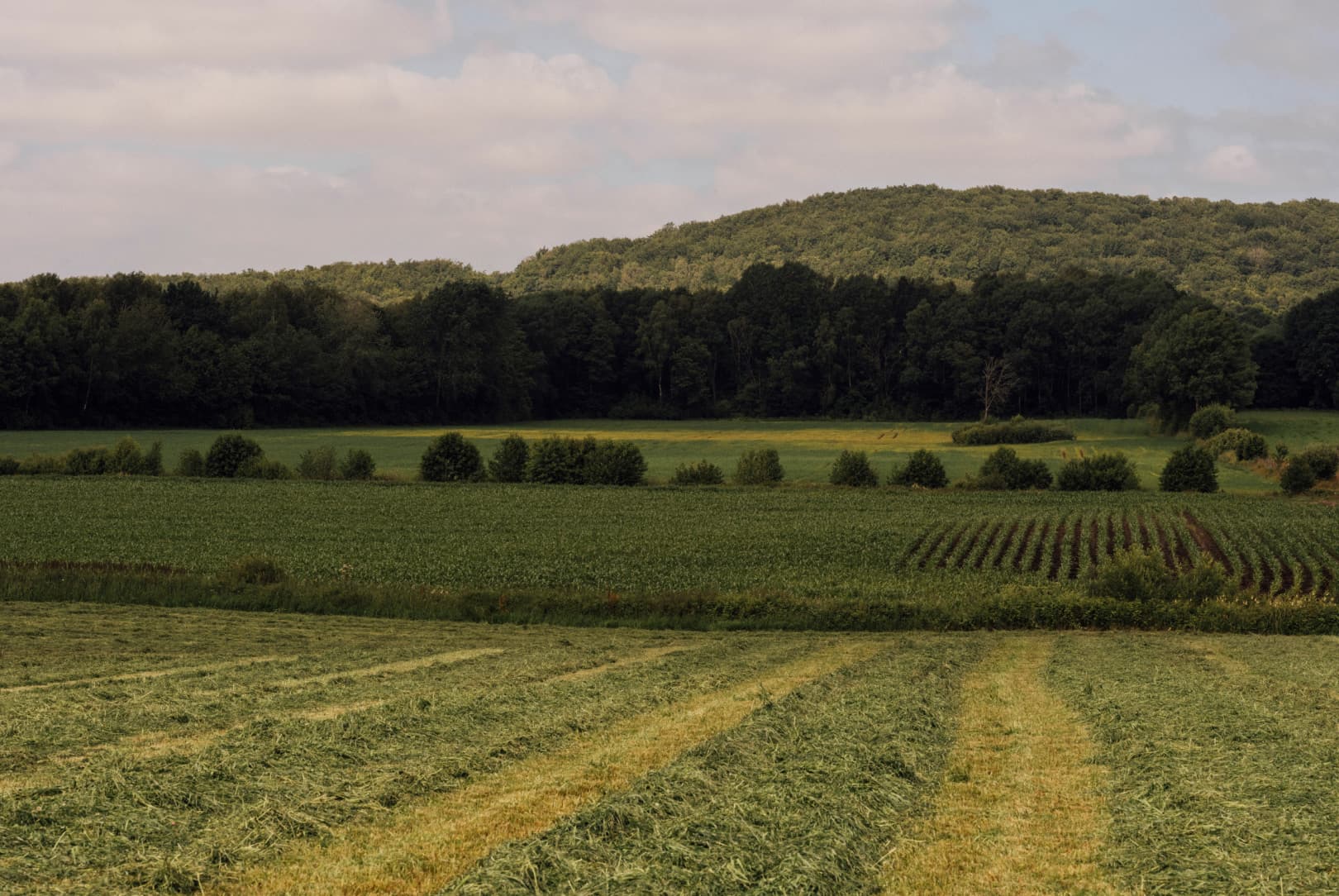
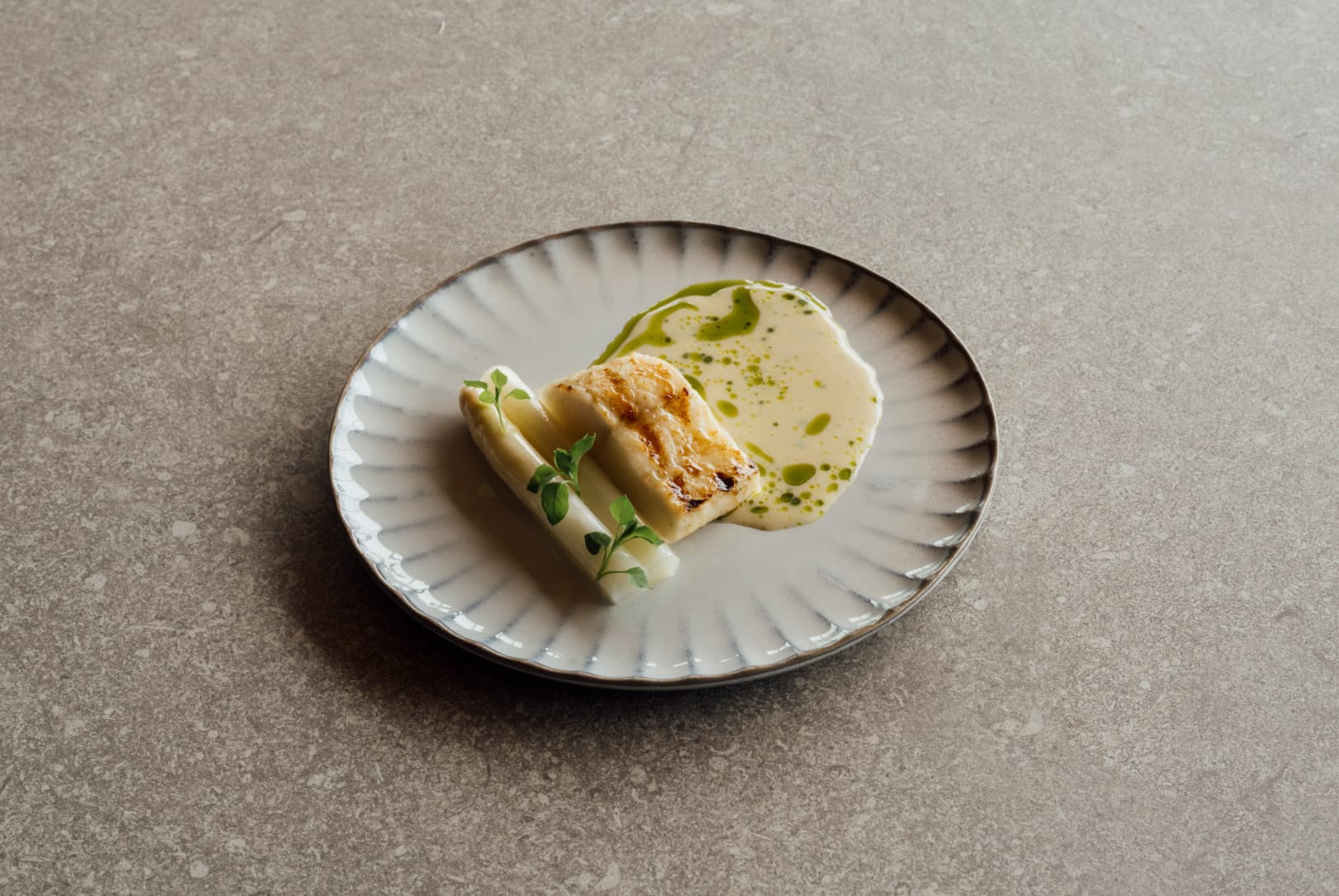
Ann-Catrine conducts the daily briefings for the staff, sharing how many seats per table, or if any allergies should be noted. The main dining room and kitchen are busy with movement in the evening, preparing for the upcoming guests, and Ann-Catrine manages it all. “I think she’s the most crucial person, not just in my personal life, but also in everything we do at ÄNG,” says Filip. “She’s my biggest critic and sometimes she knows me and my cooking better than I do.”
“I think it becomes easier to work with the person you love. And if you create what you love with that person, the result becomes so much more,” reflects Ann-Catrine. “Filip and I also enjoy the same tastes: the same spices, the same wine, so it comes naturally for us.” It’s not easy – not even for Ann-Catrine – to describe the type of chef that Filip is, but after a few seconds of thought, she uses his own process to better sketch him: “He’d rather redo everything than deliver something that isn’t 100% right. He’s extremely passionate and never takes any shortcuts.”
The apparent simplicity of ÄNG’s straightforward concept often means taking several steps backwards. It can be stressful. Ann-Catrine, with her soft voice and considerate perspective, believes that she helps Filip find a sense of calm. Conversely, working with him has allowed her to find herself “both professionally and personally,” becoming “stronger and better” at leading ÄNG. “A project like this is never done,” Ann-Catrine reflects. “There are always details that you can hone, and that’s our focus now. The new building and its flow; the food; the people working here, who are the ones creating the atmosphere. Everything has equal importance, but something we are particularly proud of is our staff.”



During the daily briefing, the staff forms a circle around Ann-Catrine, while listening to her attentively – Filip included. When it’s over, a round of applause and complicit smiles serve as both encouragement and a good luck wish for the evening, for everyone involved.
What began with three chefs and three people in service has grown into a team of twenty-seven-people, which allows ÄNG to focus more on developing, rather than the day-to-day preparations for dinner service. “If you don’t have a team that cares for one another, you’re never moving forward,” says Filip. “So, for us it’s important that we help each other and see each other as individuals, rather than as chefs, waiters, sommeliers.” Sustainability at ÄNG seems more than just choosing the right produce; it extends to the way they run the restaurant. Acknowledging the personal needs of the staff, providing psychological support to cope with the inherent stress of a service job, even deciding to be closed on weekends to allow the team “a better chance of a normal life,” as Filip puts it, is all part of the restaurant’s take on a long-term and sustainable recipe.
“ÄNG has changed me in all sorts of ways, as a chef and as a person.”
FILIP GEMZELL
The food, service and architecture work together at ÄNG, but the atmosphere depends on so much more. The journey is about what we taste, see and hear. That’s why Filip has made a point of having a perfect selection of accompanying music. He comes from a musical family, as his arm tattoo, with the musical score of a David Bowie song, reveals. His grandmother was a music teacher, his mother plays various instruments, and both Filip and his brother attended music school. So, it is a form of expression very dear to him. And very telling. When he’s cooking at home, he listens to classical music if he’s struggling with some creation; when he’s in the flow, he prefers rock music. For him, cooking is also a way of connecting to his senses and memories. To his own nature.
“ÄNG has changed me in all sorts of ways, as a chef and as a person,” reflects Filip. “I could suddenly cook anything I wanted. And I could focus on cooking things that I really enjoy rather than pleasing someone else. I’ve learned a great deal since 2019. For every year that has gone by, I’ve learned more about food and about myself than I ever had in the past”.
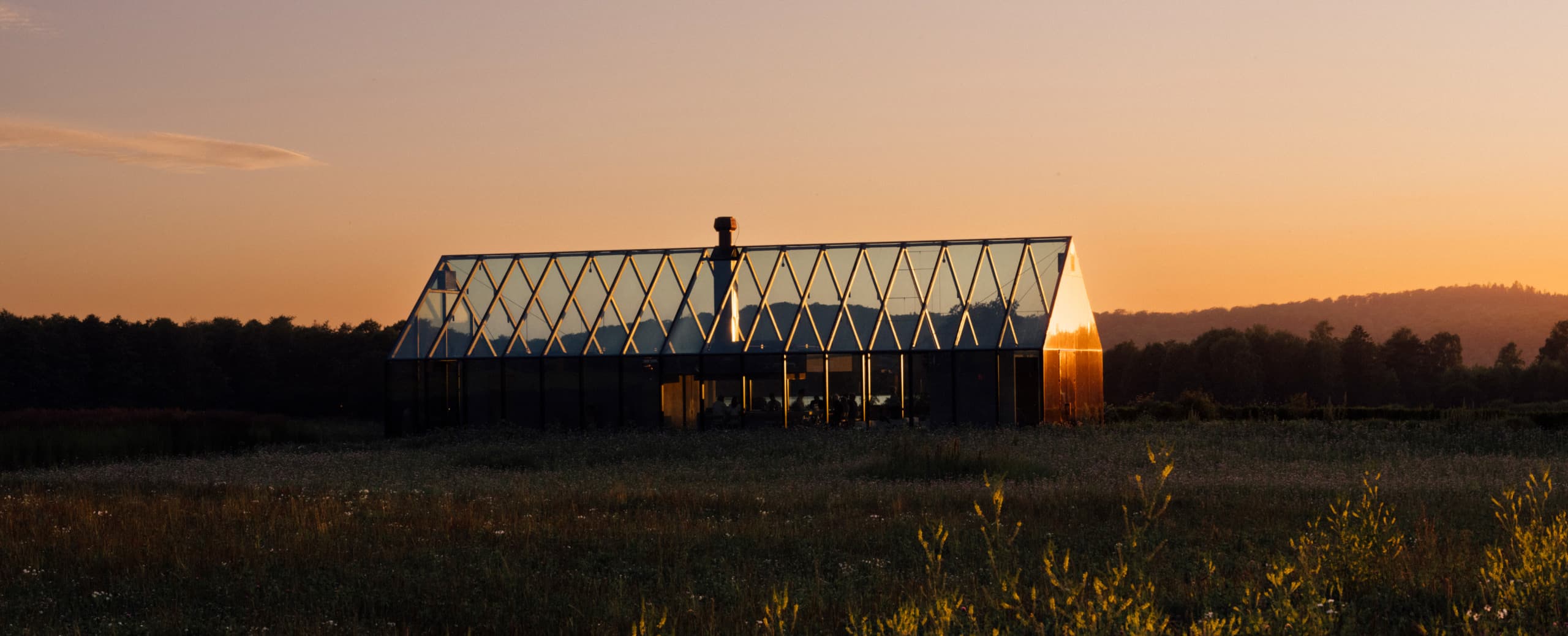
As our journey comes to an end at ÄNG, the glass house reflects the last light of the day. The flavours linger in our mouths, as the memory of the stinging nettles come to mind. Just hours ago, we saw them amid the bushes, then in the hands of the chef. In the kitchen, they were cut and mixed with mint, chilli and sorrel, and poured inside a mould that was also made of nettle. This mould had spent fourteen hours in the oven and was pressed with a bit of sugar while still hot, to give it the desired shape. The result was a little snack that fitted in the palm of our hand, much like the leaves that are its main ingredient. The taste, intense and acid, and the process, lengthy and thought-through, embody nature’s wisdom: simple in its beauty, complex in its story. Just like ÄNG’s culinary philosophy.

